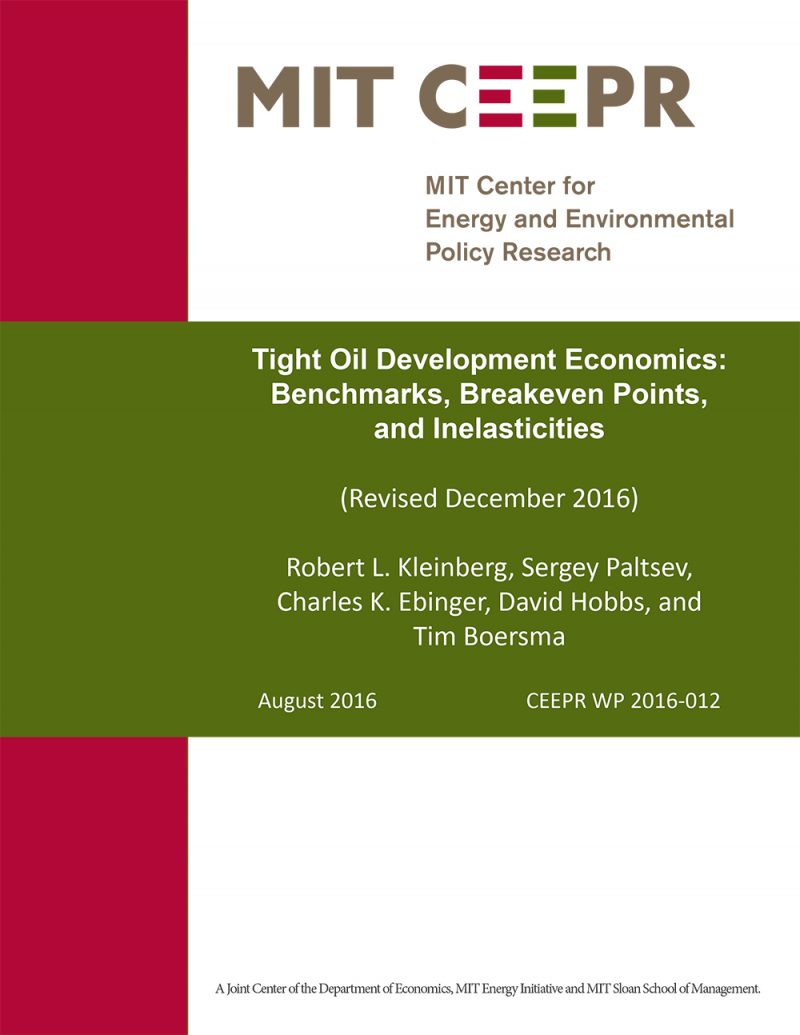Tight Oil Development Economics: Benchmarks, Breakeven Points, and Inelasticities
Robert L. Kleinberg, Sergey Paltsev, Charles K. Ebinger, David Hobbs, and Tim Boersma
August 2016
When comparing oil and gas projects – their relative attractiveness, robustness, and contribution to markets – various dollar per barrel benchmarks are quoted in the literature and in public debates. Among these benchmarks are a variety of breakeven points (also called breakeven costs or breakeven prices), which are widely used, and widely misunderstood. Misunderstandings have three origins: (1) There is no broadly accepted agreement on definitions; (2) for any given resource there is no universally applicable benchmark; (3) various breakeven points and other benchmarks are applicable at various times in the development of a resource. In this paper we clarify the purposes of several benchmarks and propose standardized definitions of them. We show how and why breakeven points are partitioned, and when each of the partitioned elements is appropriate to consider. We discuss in general terms the geological, geographical, and temporal factors that affect the benchmarks. We describe some other factors that contribute to the inelasticity of tight oil production. Finally, we explore macroeconomic and policy implications of a broader, more rigorous, and more consistent application of the breakeven point concept, and the understanding of the inelasticities that accompany it.
Keywords: breakeven points, tight oil, cost of production, production decline profiles



